The Great Himalayan National Park is a UNESCO World Heritage site spread over an area of 1,171 km² in the Kullu district of Himachal Pradesh, India. It is characterised by a wide diversity in the elevation of landforms, providing a mélange of inviting valleys, cragged ridges, meadows, and scrubs. It bears a wide range of flora, from the elusive snow leopard to Himalayan tahr, musk deer, Indian leopard, Himalayan black bear. The place has traditional villages and cultural sites, which provide ample scope for various leisure activities, including trekking, wildlife viewing, and camping.
Location
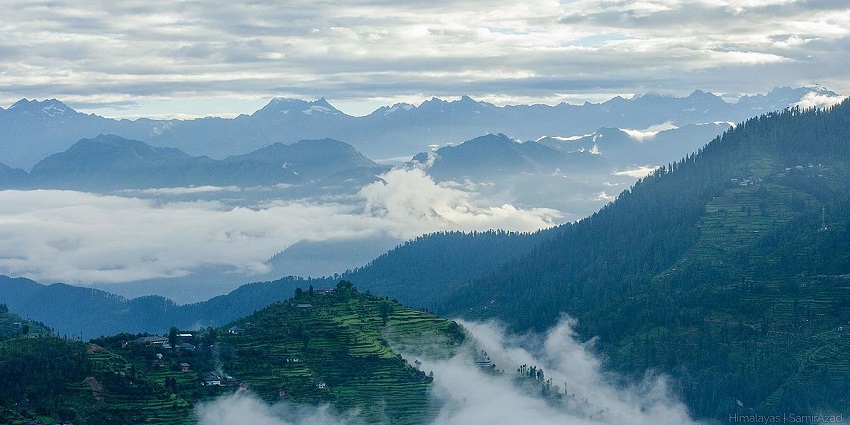
Photo: Samir Azad / Wikimedia Commons
The Great Himalayan National Park is situated in the Kullu District of Himachal Pradesh. Falls in the western part of the Himalayas, known for its towering peaks and rugged terrain. The park lies about 60 km north of Kullu and 80 km from Manali. The elevation ranges over a wide range, from 1,500 metres in the lower regions to over 6,000 metres at the crest.
Suggested Read: Trekking In Great Himalayan National Park
How To Reach Great Himalayan National Park
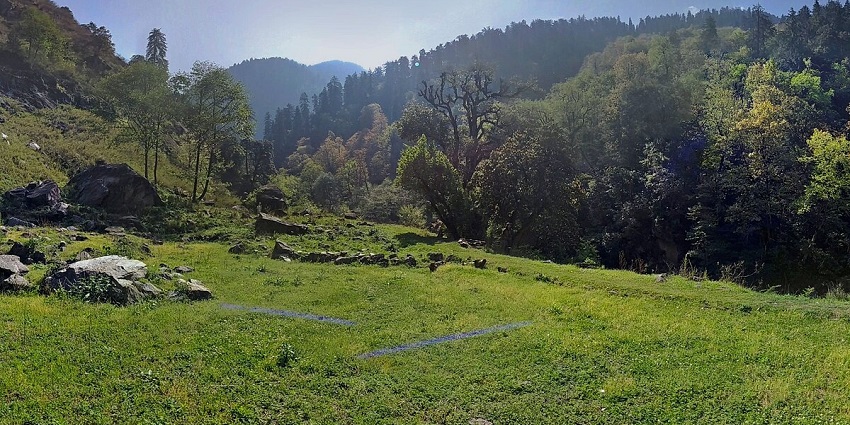
Photo: Photos Worldwide / Wikimedia Commons
By Air: Great Himalayan National Park is located 50 kilometres from Kullu-Manali Airport, accessible by taxi or bus from Bhuntar.
By Rail: The nearest major railway station is Joginder Nagar, located 100 kilometres from Kullu. Transportation to Kullu or Manali can be arranged via taxi or bus.
By Road: Kullu and Manali are easily accessible by road from major cities like Delhi, Chandigarh, and Shimla, which can be reached by driving or taking a bus.
Places To Visit In And Around Great Himalayan National Park
While the park itself is a must-visit, the surrounding areas offer equally captivating experiences. Here’s a list of places you can explore:
1. Tirthan Valley
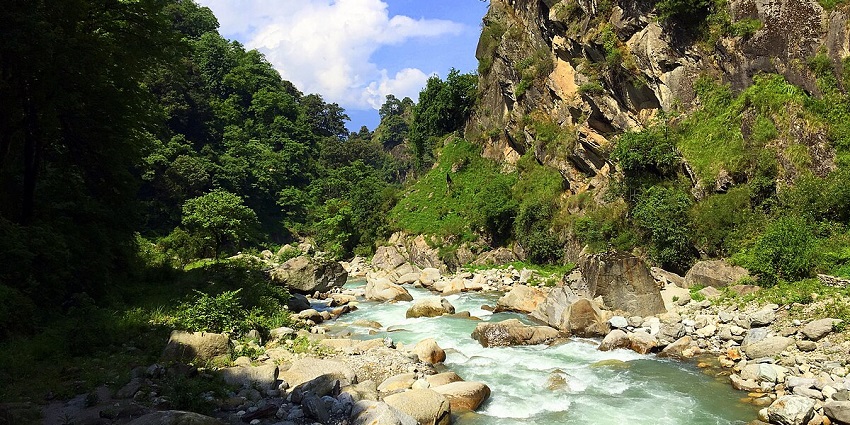
Photo: Ankitwadhwa10 / Wikimedia Commons
Tirthan Valley is located in the Kullu district of Himachal Pradesh. It is a stunning area named after the Tirthan River, which is the main feature of the valley. The Great Himalayan National Park borders the valley to the east and the Sainj Valley to the west. It has varying elevations ranging from 1,500 to 2,500 metres and experiences a temperate to alpine climate. Lush green meadows, dense forests, and terraced fields with crystal-clear rivers surround the valley.
Things To Do: Trekking, Fishing, Camping
Location: Kullu, Himachal Pradesh
Suggested Read: Best Places To Visit In Tirthan Valley To Explore The Pristine Nature
2. Parvati Valley
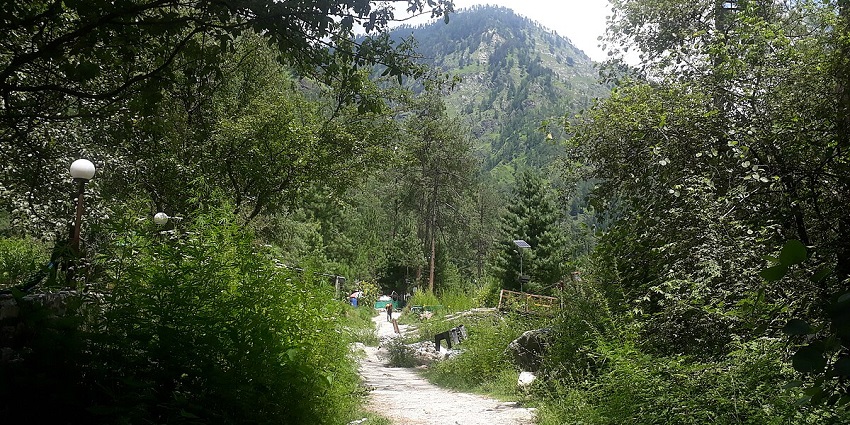
Photo: Pinakpani / Wikimedia Commons
Parvati Valley, in the Kullu district of Himachal Pradesh, is a stunning place for nature lovers. The valley lies in the northwest region of the Indian Himalayas and runs parallel to the Beas River, stretching from the Kullu Valley. It rises from about 1,200 metres above sea level in the lower parts to over 5,000 metres at one of the highest points, the Parvati Pass.
Things To Do: Trekking, Fishing, Camping
Location: Kullu, Beas River, Himachal Pradesh
3. Manali
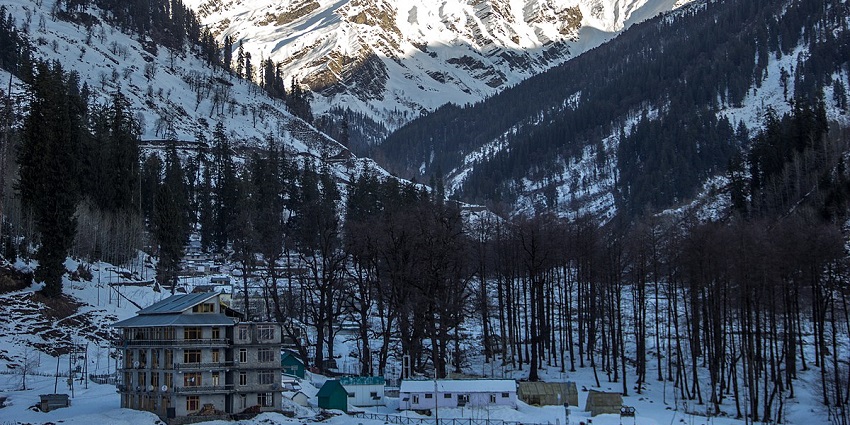
Photo: Shameer Thajudeen / Wikimedia Commons
Manali is renowned as an eldritch paradise for adventure lovers and nature enthusiasts. Nestled in the heart of the Kullu Valley, surrounded by towering snow-capped peaks and precious green forests, it is beyond the reach of usual outdoor sports or games. Manali offers paragliding and skiing, followed by a visit to Solang Valley and Rohtang Pass, which shall satiate people looking for thrills. Hidimba Devi Temple and old Manali provide a peaceful retreat.
Things To Do: Trekking, Shopping, Adventure Sports, Hot Spring
Location: Himachal Pradesh
Suggested Read: Best Places To Visit In Manali
4. Sainj Valley
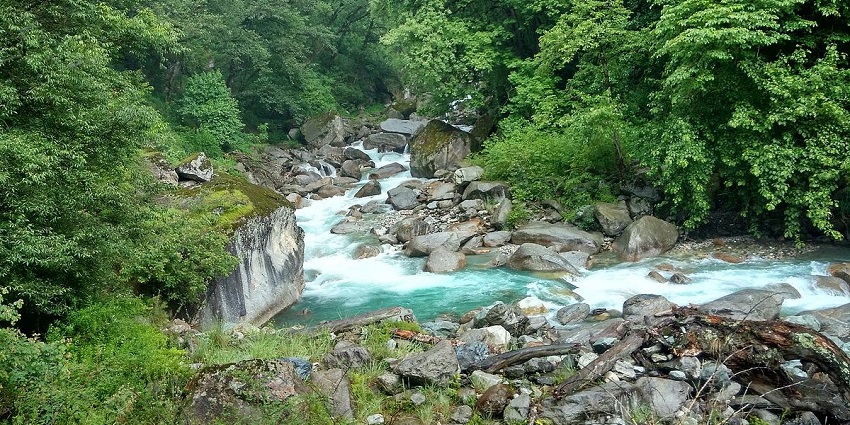
Photo: Rah.sin89 / Wikimedia Commons
Sainj Valley is a serene area of immense natural beauty, including picturesque traditional villages, and is close to the Great Himalayan National Park. Starting from 1,500 metres in the lower regions and up to 2,500 metres in the higher areas, it makes for a very scenic land with terraced fields, lush green forests, flowing rivers, and towering mountain peaks. The valley enjoys a temperate climate with mild summers, cold winters, and considerable snowfall at higher altitudes.
Things To Do: Trekking, Fishing, Camping
Location: Kullu, Himachal Pradesh
5. Serolsar Lake
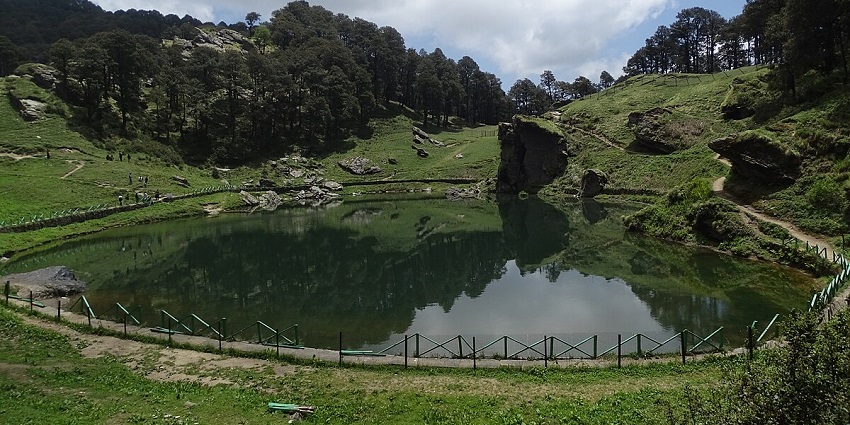
Photo: Sukhjiwan Singh / Wikimedia Commons
One of the premier places near the Himalayan National Park is Serolsar Lake, a virgin high-altitude glacial lake and one of the most serene spots nestled at an altitude of about 3,100 metres in the Tirthan Valley. The expanse contains a picturesque environment amidst dense forests and towering peaks of the Himalayas. From here, one reaches the Serolsar Lake, ideal for trekkers looking for a peaceful retreat deep into the Himalayas.
Things To Do: Trekking, Camping, Picnicking
Location: Tirthan Valley, Himachal Pradesh
Suggested Read: Top Offbeat Places In Himachal Pradesh For Fresh Mountain Air
Where To Stay

Photo: Edvard Nalbantjan / Shutterstock / Image For Representation Only
Kullu features a long array of accommodation facilities located near the Himalayan National Park, suiting different budgets and tastes. Some recommended places to stay here are The Hostellers Shangarh, Zostel Shangarh, The Villster Resort, Suhaana Ghar, and Ishan Log Huts.
Where To Eat

Photo: Kaynatkazi / Wikimedia Commons
Varieties of dining options are available at Great Himalayan National Park. Some local cafes and guesthouses are The Tirthan Soul, Sinj, Jibhi, The Little Café, and Tirthan Village. Chana Madra, Siddu, and Kadi are some of the local specialities.
Suggested Read: Hill Stations In Himachal Pradesh Where You Can Get Lost In The Mountains
Best Time To Visit Great Himalayan National Park
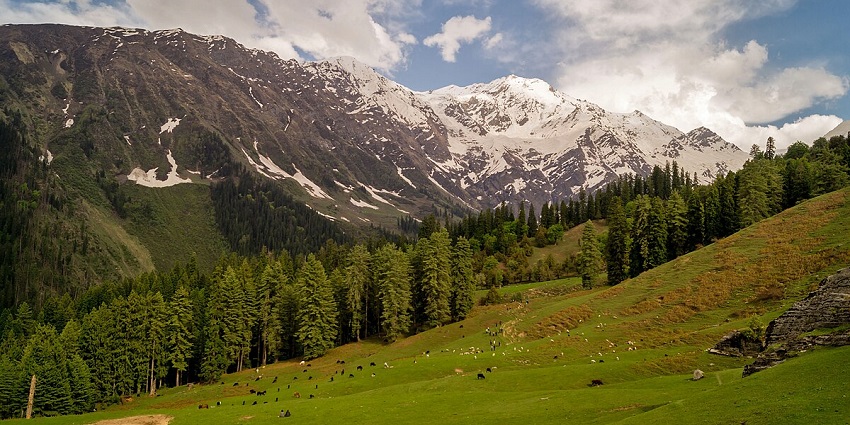
Photo: Suresh Karia / Wikimedia Commons
The best time to visit the Great Himalayan National Park is during spring, when the weather remains mild with clear skies and the wildflowers are blooming. The summers, from July to September, are warm with occasional rainfall. Autumn offers clear skies, crisp air, and very stable weather. It’s an ideal time for trekking, wildlife viewing. Whereas winter is perfect for snow and winter landscapes. Tourists don’t need to worry about Great Himalayan National park timings as the park is open all 24 hours.
Other Factors To Consider
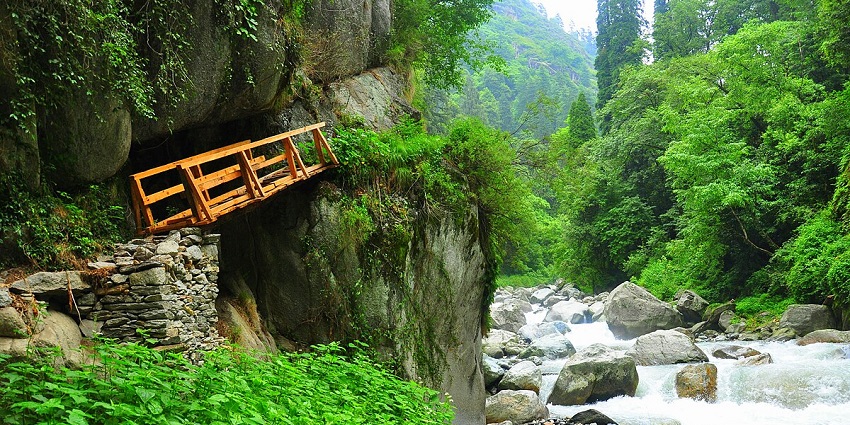
Photo: Ankitwadhwa10 / Wikimedia Commons / Image For Representation Only
Average Cost Of The Trip
The cost of visiting the Great Himalayan National Park includes travel, accommodation, permits, food, activities, and extra expenses. The park entry charges range from ₹800 to ₹1,500, with other charges being a camera permit and hiring guides. Food from one meal to another ranges from ₹400 to ₹1,200.
Tips For Travellers
- Obtain permits for park entry and trekking in advance.
- Click photos in Great Himalayan National Park, but do not disturb the wildlife.
- Acclimatise to the altitude, stay hydrated, and carry a basic medical kit.
- Use sunscreen, sunglasses, and a hat for sun protection.
- Book accommodations and meals early, and try local cuisine. Respect local customs and traditions, and support the local economy.
- Practise environmental responsibility by leaving no trace and using eco-friendly products.
Suggested Read: Wildlife Sanctuaries In Himachal Pradesh To Visit On Your Upcoming Trip
The Great Himalayan National Park is an unparalleled wilderness, a perfect sanctuary for adventurers and nature lovers. The gems nestled around add to the charm. Encounter the majestic snow leopard, trek through pristine landscapes, or simply bask in the tranquillity of this Himalayan gem. Choose Trip XL to plan your adventure and book accommodations, transportation, and activities that suit your interests!
Cover Photo: Sumit.Kumar.99 / Shutterstock


 WhatsApp
WhatsApp
 Twitter
Twitter









